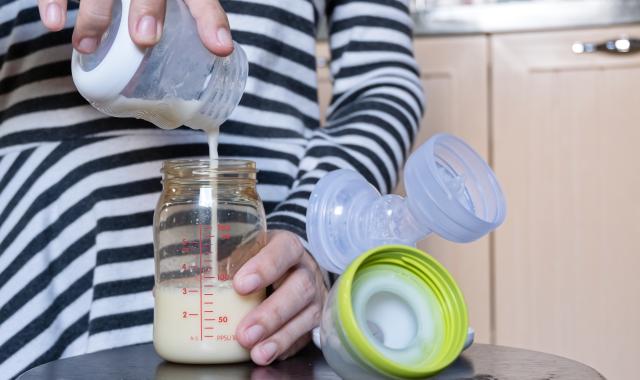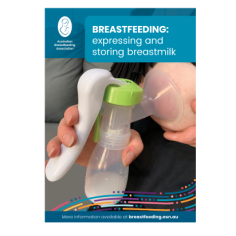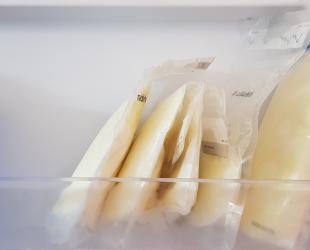How to safely warm chilled or frozen breastmilk

First, some important safety information about preparing expressed breastmilk (EBM)
-
Wash your hands well before you start to prepare a feed.
-
Do not overheat or boil breastmilk. This can destroy some of the nutrients in the EBM.
-
Do not use a microwave oven to thaw or heat EBM. Research shows microwaving destroys some of the nutrients and immune factors. It can also cause dangerous hotspots that could burn your baby's mouth.
-
EBM, like other food, can grow germs, particularly after freezing and thawing. Bottles, teats, spoons, cups or other feeding equipment need to be washed well in hot, soapy water and rinsed well (air-dry or dry with new paper towel if not being used straight away).
-
Do not refreeze thawed breastmilk or heat it more than once. Offer small amounts of EBM at a time to your baby to avoid wastage. Any EBM that your baby doesn't take at that time will need to be thrown away. If your baby needs more, prepare another small amount.
Warming chilled breastmilk
In most cases the mother will leave expressed breastmilk (EBM) ready in bottles in the fridge. Fresh EBM can be kept safely in the fridge for up to 72 hours.
To heat cold EBM, stand the bottle in a container of hot water (not boiling) until the milk reaches body heat. Test how warm the milk is by dropping a little onto your wrist. It’s right when it feels warm.
Warming frozen breastmilk
Frozen EBM may be in a bottle, storage bag or other container. It can be warmed quickly or thawed slowly in the fridge.
Do not leave frozen EBM to thaw at room temperature.
To thaw EBM quickly, move the bottle or bag of frozen EBM about in a bowl of warm water. As the water cools, add a little hot water to the bowl and keep moving the EBM around until it all becomes liquid. You may need to then put the EBM into a clean feeding container.
Milk that has been thawed in the fridge can be
-
stored for 24 hours in the fridge OR
-
kept for no more than 4 hours at room temperature OR
-
used immediately to feed the baby.
Breastmilk smells or tastes strange?
Occasionally a mum might notice a change in the taste and smell of her breastmilk after it's been stored. This can be due to an enzyme called lipase (which naturally occurs in breastmilk) breaking down the fat in the milk as it would normally in a baby's stomach. It isn’t harmful but some babies may not like the taste. It doesn’t happen to many mums but if you find this happens with your breastmilk, it’s probably going to keep happening.
The problem can be fixed by heating your EBM (not in the microwave) to 72'C for 2 minutes straight after expressing. This will stop the enzymes from working. Then cool it quickly by placing the container into a bowl or sink of ice and water. You will only lose some of the protective properties of the milk. This is better than having to throw it away. Then store your milk as usual.
© Australian Breastfeeding Association April 2022
Spitzer, J., Doucet, S., & Buettner, A. (2010). The influence of storage conditions on flavour changes in human milk. Food Quality and Preference, 21(8), 998-1007.
More resources on using expressed breastmilk




